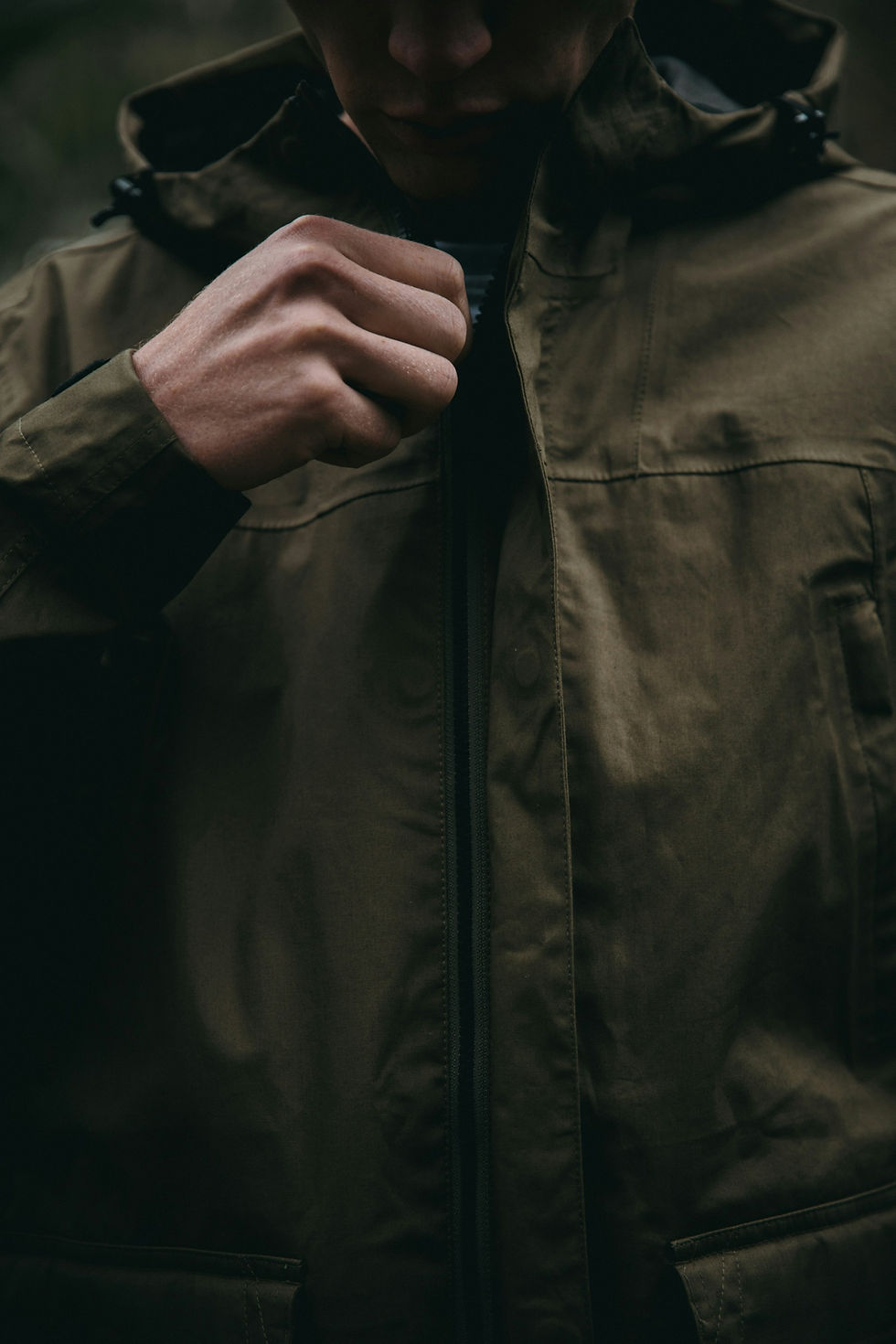Different types of wax for different types of weaves of cotton; what wax should you use?
- Mr. Darcy Downpour

- 5 days ago
- 4 min read
Updated: 2 days ago
What many people don't realise is that cotton, generally speaking, takes exceptionally well to waxing. As a rule, the outer shell of a wax jacket is also made from cotton, but in most cases, it's of a very tightly-woven variety. However, slightly coarser types of cotton also wax beautifully. Have you got a rucksack or a duffle bag knocking about that's made from cotton? Then waxing is an excellent idea.
Waxing protects the cotton from wear and tear and, not insignificantly, ensures the cotton is completely waterproof. In this modest piece of writing I would like to elaborate briefly on different types of wax for different types of and weaves of cotton and in general; how to go about it.

Waxing fine-weave cotton
Among the finer types of cotton, I'd include, for convenience, the cotton used in producing wax jackets. By fine, I mean that the fibres are very thin and you can barely see them. This type of cotton is tremendously strong due to its tight weave, considerably thinner, and therefore more difficult for wax to penetrate. As such, a mixture of wax and oil is often used for this sort of cotton. Here's why: because the cotton is so tightly woven, it's tricky for the wax to work its way properly into the fibres when heated. This will only partially succeed. Oil, however, does the job nicely. The oil penetrates the fibres well, whilst the wax sits more on the surface, providing good protection, whilst the oil guarantees water resistance.
When you're waxing fine-weave cotton, you can mix your own wax. For this, I'd happily direct you to an article I wrote previously about how to blend your own wax. However, there are excellent ready-made wax variants available, including Barbour Wax Thornproof Dressing, Otterwax Fabric Dressing, or a variant from the wildly popular outdoor brand Patagonia.
Waxing coarser types of cotton
Here, I'm thinking more of the type of cotton that's allowed to be somewhat stiffer. Think, for example, of a heavy-duty duffle bag such as those still used in the military, or a rucksack, small or large. Therefore, you can use a type of wax that's considerably stiffer and contains far less oil. In fact, you could simply melt paraffin wax and add a little natural baby oil to it, though my preference is for beeswax. There are plenty of online shops that sell beeswax by the kilogram. The advantage of beeswax is that it's naturally organic and it's also somewhat more flexible. But for truly heavy-duty work, you can use paraffin wax. It's simply more durable. Now you know the different types of wax for different types of and weaves of cotton.
Ready to wax? Here's a little step-by-step guide
Whatever you're waxing, I use a bag in this example, ensure you do this in a well-ventilated space. When melting wax, some off-gassing can occur. It's not immediately harmful, but you might feel slightly dizzy.
Gather Supplies: Obtain wax specifically for fabric (ideally a beeswax/paraffin blend), a heat-safe container for wax, two clean sponges or lint-free cloths, a bowl or pot for a hot water bath, a hairdryer, and a soft brush for cleaning.
Clean the Bag: Use a dry soft brush or lint roller to remove dirt, dust, and debris from the surface and seams. If there are stains or spots, use a damp sponge with a mild soap solution to gently clean those areas; allow to dry completely.
Prepare Wax: Place the tin or container of wax in a bowl with hot water (double boiler method). Let the wax soften but not melt completely into liquid. The wax should be soft enough to leave an imprint when pressed gently.
Apply Wax: Using a dry sponge or cloth, dip lightly into the softened wax and begin rubbing it onto the cotton duffle bag in small, circular, or even strokes. Focus on covering the entire exterior evenly without thick clumps, with extra attention on seams, creases, and high-wear areas.
Avoid Over-Application: Don't oversaturate the fabric, as too much wax will make the cotton stiff and reduce breathability. The goal is an even, thin wax layer that soaks into the fabric fibres.
Heat the Wax: Use a hairdryer on a low or medium heat setting to warm the waxed areas. Hold the dryer a few inches from the surface and move it continuously to avoid heat damage. Heating helps the wax melt slightly and penetrate deeper into the fabric.
Smooth and Spread: Whilst heating, use your hands or a clean cloth to smooth out and evenly distribute the wax, paying close attention to folds and seams to ensure the wax is absorbed and not just sitting on the surface.
Repeat if Needed: If some areas look dry or uneven, apply a bit more wax and repeat the heating and smoothing process on those parts.
Dry and Cure: Hang the duffle bag in a warm, dry area overnight or for 24 hours. This allows the wax to set firmly into the fabric.
Inspect and Touch Up: After drying, inspect the bag. If there are any white, chalky spots or uneven wax patches, reheat and rub those areas to blend the wax properly.
Final Cleaning: If any wax residue is on hardware or non-fabric parts, gently rub it off with a cloth to avoid build-up.



